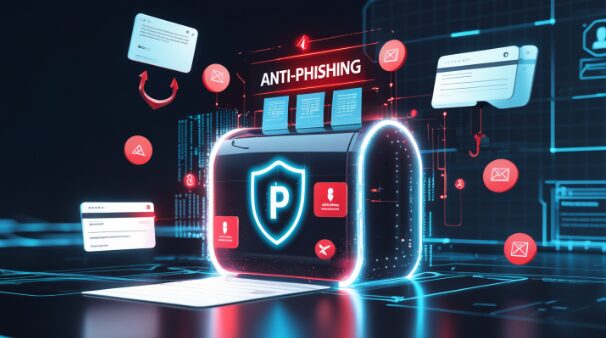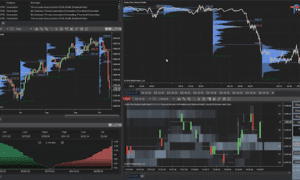Email remains a vital communication tool—but it’s also the most common entry point for cyberattacks. Every day, millions of phishing emails are sent in an attempt to steal login credentials, spread malware, or impersonate trusted brands. That’s where anti-phishing solutions step in. These intelligent systems are designed to block deceptive messages before they even reach your inbox.
In a world flooded with spam and scams, smart phishing protection is your best defense.
What Are Anti-Phishing Solutions?
Anti-phishing solutions are software tools and technologies designed to detect, filter, and prevent phishing emails. These systems analyze incoming messages for suspicious patterns, hidden malware, and social engineering tactics.
Whether it’s a fake password reset link or a fraudulent invoice, these solutions use phishing detection algorithms to stop threats in real-time.
Core Capabilities of Anti-Phishing Solutions:
- Analyze email headers, domain data, and sender reputation
- Identify spoofed links and cloned login pages
- Block attachments that contain malware or ransomware
- Quarantine suspicious messages for review
- Provide user alerts and admin dashboards
The Role of AI in Modern Phishing Detection
Today’s anti-phishing tools are powered by artificial intelligence and machine learning. These systems constantly evolve by learning from new threats, which helps improve accuracy and speed in phishing detection.
How AI Enhances Security:
- Detects zero-day phishing threats
- Flags previously unknown malicious URLs
- Recognizes unusual communication patterns
- Identifies brand impersonation attempts in seconds
This level of automation is essential for large-scale phishing protection, especially in enterprise environments.
How Anti-Phishing Keeps Your Inbox Safe
Every time you receive an email, an anti-phishing system silently checks its content. It scans everything—from the subject line to the embedded links—looking for red flags.
Here’s How It Works:
- URL scanning: Ensures all links are from legitimate sources.
- Attachment filtering: Blocks files that may carry malware.
- Reputation scoring: Ranks the sender’s trust level based on historical behavior.
- Behavioral analysis: Detects messages that use psychological tricks to manipulate users.
Combined with malware prevention tools, these steps help keep your inbox free from dangerous content.
Why Businesses Must Prioritize Brand Protection
Cybercriminals often impersonate well-known brands to deceive users. If your company is targeted, it’s not just an IT issue—it’s a threat to your reputation. That’s why brand protection is a key part of any anti-phishing strategy.
Tips for Strengthening Brand Protection:
- Implement DMARC, SPF, and DKIM to authenticate your domain
- Monitor the web for spoofed versions of your site or emails
- Educate your customers about official communication policies
- Use threat intelligence to stay ahead of evolving scams
Protecting your brand isn’t just about security—it’s about maintaining trust.
Benefits of Phishing Takedown Services
Even with great defenses, some phishing websites still go live. This is where phishing takedown services come into play. These specialized tools detect and report fake sites that impersonate brands or host malicious content.
What Phishing Takedown Services Do:
- Identify fraudulent pages targeting your business
- Work with hosting providers to remove the content
- Monitor dark web forums and phishing kits
- Provide reports on takedown success and timeframes
These services are vital for companies seeking complete phishing protection beyond their internal systems.
Best Practices for Email Users
Technology is essential, but user awareness plays a major role in maintaining inbox safety. You’re the first line of defense—and with smart habits, you can avoid falling into phishing traps.
Email Safety Tips:
- Never click on links or open attachments from unknown senders
- Check for minor spelling or formatting issues in official-looking emails
- Avoid logging into accounts via links sent by email—go to the website directly
- Use multi-factor authentication for email and banking platforms
- Report suspicious emails to your IT team or service provider
Combined with anti-phishing software, these habits can drastically reduce your exposure to cyber threats.
Anti-Phishing in a Corporate Environment
For organizations, anti-phishing tools are a cornerstone of email security. They protect employees, clients, and sensitive data. But to be truly effective, they must be part of a wider malware prevention and cybersecurity policy.
Organizational Tactics:
- Train employees regularly on identifying phishing emails
- Run phishing simulation campaigns to test staff readiness
- Integrate email security tools with SIEM and endpoint protection
- Implement policy-based filtering for different departments
- Collaborate with legal and IT teams for phishing takedown escalation
This holistic approach not only protects inboxes—it safeguards entire systems and customer trust.
Conclusion
With phishing attacks growing more sophisticated each day, relying on basic spam filters is no longer enough. Anti-phishing solutions offer a proactive and intelligent way to guard your inbox from deceptive threats. From powerful phishing detection to real-time malware prevention and global phishing takedown operations, modern email security is a complete ecosystem.



































